 My most recent excursion was spending the first three
weeks of September in Ireland. Last year, I'd been invited to
speak on wilderness EMS and Wilderness EMT Training at the 1995
Annual U.K. Mountain Rescue Conference. I remember, after the
days' talks were over, being at the bar at Cardiff University
with a beer in my hand, when I noticed some of the Irish Mountain
Rescue Association contingent (Republic and Northern both)
frowning and walking out. About 45 minutes later they wandered
back in with big smiles on their faces. They grabbed me and a
couple of other folks, from Wales as I remember, set down our
beers, and forcibly marched us out the door. We walked about a
mile along residential streets with virtually no explanation
except for some laughter. Aha! We finally came to a pub that
served Guinness.
My most recent excursion was spending the first three
weeks of September in Ireland. Last year, I'd been invited to
speak on wilderness EMS and Wilderness EMT Training at the 1995
Annual U.K. Mountain Rescue Conference. I remember, after the
days' talks were over, being at the bar at Cardiff University
with a beer in my hand, when I noticed some of the Irish Mountain
Rescue Association contingent (Republic and Northern both)
frowning and walking out. About 45 minutes later they wandered
back in with big smiles on their faces. They grabbed me and a
couple of other folks, from Wales as I remember, set down our
beers, and forcibly marched us out the door. We walked about a
mile along residential streets with virtually no explanation
except for some laughter. Aha! We finally came to a pub that
served Guinness.
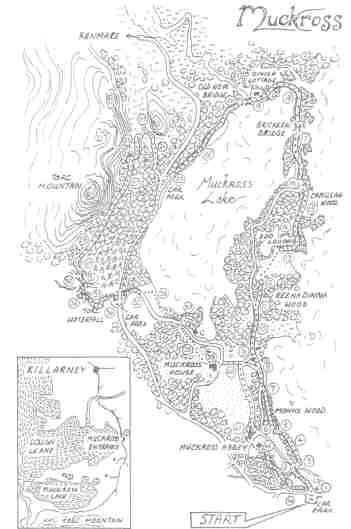 They tell me I agreed to con some of my
cronies into coming over to this fall's 1996 joint U.K./Irish
Mountain Rescue Conference and giving talks again, and what's
more offering WEMSI Wilderness EMT and Wilderness Command
Physician courses and an instructor course as preconference
workshops. And somehow, due to lots of work on the part of WEMSI
staff members Sam Chewning, M.D., Owen Gormley, EMT-P, Jack
Grandey, EMT-P, and Don Scelza, EMT-P, and Gerry Butler, Joe
O'Gorman and many others of IMRA, the courses came off. I won't
mention what the !?!@#! students did every night after the 8 AM -
10 PM class schedule as they closed down Dougherty's Pub.
They tell me I agreed to con some of my
cronies into coming over to this fall's 1996 joint U.K./Irish
Mountain Rescue Conference and giving talks again, and what's
more offering WEMSI Wilderness EMT and Wilderness Command
Physician courses and an instructor course as preconference
workshops. And somehow, due to lots of work on the part of WEMSI
staff members Sam Chewning, M.D., Owen Gormley, EMT-P, Jack
Grandey, EMT-P, and Don Scelza, EMT-P, and Gerry Butler, Joe
O'Gorman and many others of IMRA, the courses came off. I won't
mention what the !?!@#! students did every night after the 8 AM -
10 PM class schedule as they closed down Dougherty's Pub.
And now Ireland and the UK have some WEMSI instructors, and
plan to continue developing the WEMT idea there. Gerry and Joe
and particularly Nora (who didn't take the course this year but
essentially ran the thing) were nice enough to give the five of
us presents at the conclusion of the course: pile jackets with
the offical course emblem embroidered on them:
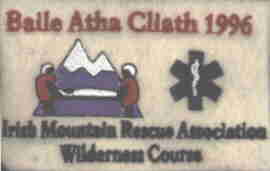
The conference committee also honored me by allowing me to
give the keynote address ("Why we do mountain rescue"),
followed by an official opening address by Mary Robinson, the
President of Ireland. I was formally introduced to her and had a
chance to chat at a reception after her opening the conference.
After the conference, Betty and I spent a week exploring
Ireland; a day in Dublin, highlighted by a 2.5 hour historical
tour led by a history grad student from Trinity; a visit to the
Lowe Alpine Systems factory store in central Ireland; a night in
Kinnitty castle ("welcoming visitors since 1209"); a
visit to the Aillwee commercial cave and some hillwalking
(=day-hiking/scrambling) in the Burren area of karst in County
Clare; and some very fine hillwalking in County Kerry's Iveragh
Peninsula and particularly in Killarney National Park -- and the
weather was perfect. We used our raingear only for sitting on at
lunch-time. Some advice for others from the U.S. planning walking
holidays in Ireland:
1. Ireland has a marine climate -- expect rain and wind, but
not much in the way of daily or seasonal variation in temperature
compared to the U.S. mountains. But Gerry Butler of the
Dublin-Wicklow Mountain Rescue Team emailed me to say:
> Regarding Ireland's climate. We do not have a climate
here - just
> weather (i.e., it varies a lot). I have been in a snow
blizzard in
> June on the mountains in Kerry and (mild) hypothermia is not
an
> uncommon complaint of injured persons in the mountains all
the year
> round. I must admit never having heard of heat illness in
winter
> though.
2. Don't expect to be able to follow the long-distance paths
(Kerry Way, Burren Way, Wicklow Way, etc.) without a guide -- the
Irish haven't discovered paint blazes for trails, and the marking
is nonexistent in many places.
3. Don't expect all paths to be well-maintained -- along Torc
Mountain in Killarney National Park we found the same trail in
places both beautifully maintained and so overgrown we had to get
on our hands and knees to get under the rhododendron.
4. Go to an outdoor store or big bookstore and get Kevin
Corcoran's Kerry Walks, West of Ireland Walks, or West Cork Walks
-- excellent guides (the map above is an example of his wonderful
sketch maps).
5. The new Ordnance Survey maps are much better than the old
ones, but we found Corcoran's sketch maps entirely adequate.
Kinnitty Castle, County Offaly (a bargain B+B at 60 pounds a
night!):
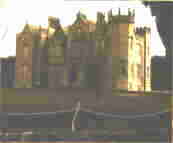
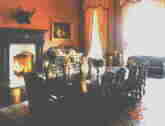
Aillwee Cave and the surface of The Burren, County Clare:
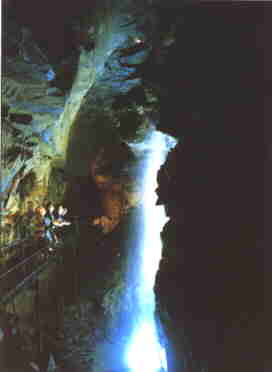
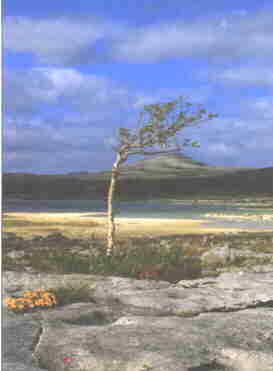
 Back to
Keith's Home Page
Back to
Keith's Home Page
 My most recent excursion was spending the first three
weeks of September in Ireland. Last year, I'd been invited to
speak on wilderness EMS and Wilderness EMT Training at the 1995
Annual U.K. Mountain Rescue Conference. I remember, after the
days' talks were over, being at the bar at Cardiff University
with a beer in my hand, when I noticed some of the Irish Mountain
Rescue Association contingent (Republic and Northern both)
frowning and walking out. About 45 minutes later they wandered
back in with big smiles on their faces. They grabbed me and a
couple of other folks, from Wales as I remember, set down our
beers, and forcibly marched us out the door. We walked about a
mile along residential streets with virtually no explanation
except for some laughter. Aha! We finally came to a pub that
served Guinness.
My most recent excursion was spending the first three
weeks of September in Ireland. Last year, I'd been invited to
speak on wilderness EMS and Wilderness EMT Training at the 1995
Annual U.K. Mountain Rescue Conference. I remember, after the
days' talks were over, being at the bar at Cardiff University
with a beer in my hand, when I noticed some of the Irish Mountain
Rescue Association contingent (Republic and Northern both)
frowning and walking out. About 45 minutes later they wandered
back in with big smiles on their faces. They grabbed me and a
couple of other folks, from Wales as I remember, set down our
beers, and forcibly marched us out the door. We walked about a
mile along residential streets with virtually no explanation
except for some laughter. Aha! We finally came to a pub that
served Guinness. They tell me I agreed to con some of my
cronies into coming over to this fall's 1996 joint U.K./Irish
Mountain Rescue Conference and giving talks again, and what's
more offering WEMSI Wilderness EMT and Wilderness Command
Physician courses and an instructor course as preconference
workshops. And somehow, due to lots of work on the part of WEMSI
staff members Sam Chewning, M.D., Owen Gormley, EMT-P, Jack
Grandey, EMT-P, and Don Scelza, EMT-P, and Gerry Butler, Joe
O'Gorman and many others of IMRA, the courses came off. I won't
mention what the !?!@#! students did every night after the 8 AM -
10 PM class schedule as they closed down Dougherty's Pub.
They tell me I agreed to con some of my
cronies into coming over to this fall's 1996 joint U.K./Irish
Mountain Rescue Conference and giving talks again, and what's
more offering WEMSI Wilderness EMT and Wilderness Command
Physician courses and an instructor course as preconference
workshops. And somehow, due to lots of work on the part of WEMSI
staff members Sam Chewning, M.D., Owen Gormley, EMT-P, Jack
Grandey, EMT-P, and Don Scelza, EMT-P, and Gerry Butler, Joe
O'Gorman and many others of IMRA, the courses came off. I won't
mention what the !?!@#! students did every night after the 8 AM -
10 PM class schedule as they closed down Dougherty's Pub.




